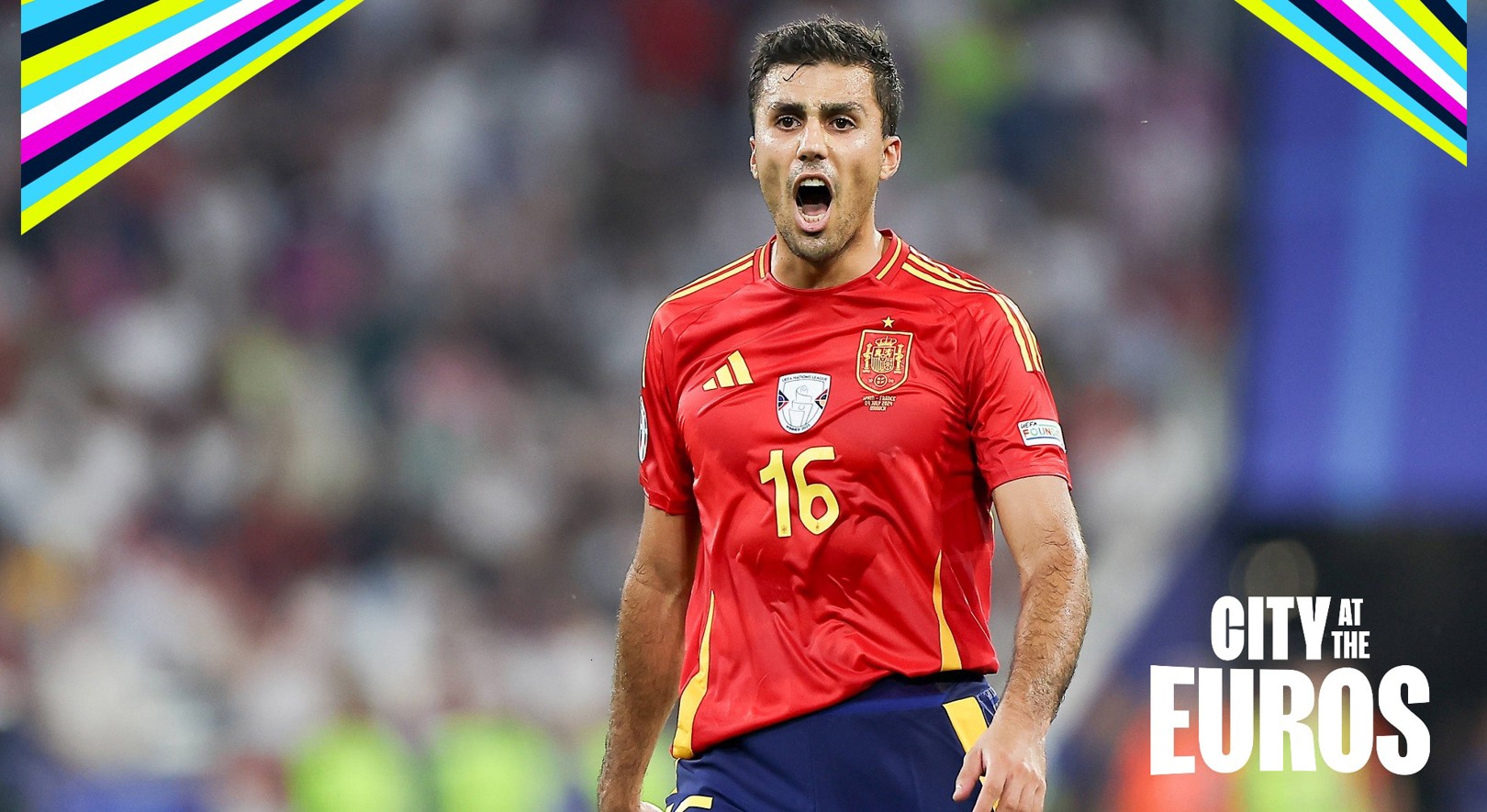It’s fair to say that Rodrigo Hernández Cascante’s dream was always to one day pull on the red shirt of Spain.
And it seems he was always destined to play at the Euros, having been born on the day England beat Spain on penalties at Euro ’96!
It’s a remarkable coincidence for a quite remarkable footballer.

Born in Madrid on 22 June 1996, Rodrigo would become one football’s most studious talents.
From an early age, he had a very definite on his role and style of play, no matter what age level he was at, holding in-depth tactical discussions with coaches and other influential figures.
“That’s not normal in a boy his age,” his Atleti Under-12 coach Fran Alcoy once recalled. “He was very sharp tactically; it was striking that you could tell him something and you wouldn’t need to explain it again. You could see he understood completely. I had never coached a player like him.”
Around that time, Rodrigo was watching those who inspired him the most in the national team, learning and taking what he could from the greatest side La Roja had ever produced.
Little did he know that he would one day spoken as an equal of the heroes he once studied and aspired to be.
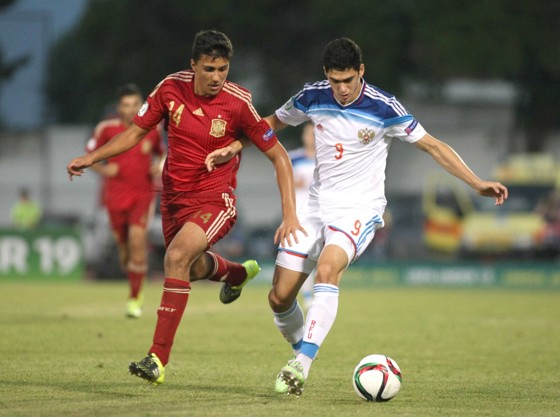
“In 2008, I was watching Marcos Senna and Xavi Hernández, Andrés Iniesta and Santi Cazorla,” says Rodrigo.
“They were the ones that imposed that winning style on the team, a style which evolved and won Spain the World Cup and another European Championship. I watched Sergio Busquets especially closely. He, and others, lay down a model of playing I knew I had to follow.
“When I was a kid, I was more interested in understanding football than enjoying it. I was interested in how it worked. I watched a lot of games – my family was sick of it – and if I could judge what a player was thinking. I tried to add that to my game; I could see that if I understood the game I would have an advantage, especially at a young age when few players have that conceptual understanding.”
Despite his obvious intelligence and maturity, it was a little ironic that he was released by the Atletico Madrid youth academy aged 17 due to reportedly having a lack of height and physical strength that was believed to put him at a disadvantage to his team-mates.
The youngster’s physique didn’t put off Villarreal who snapped him up in 2013 - and within 18 months had shot up to 6 foot 2 inches!
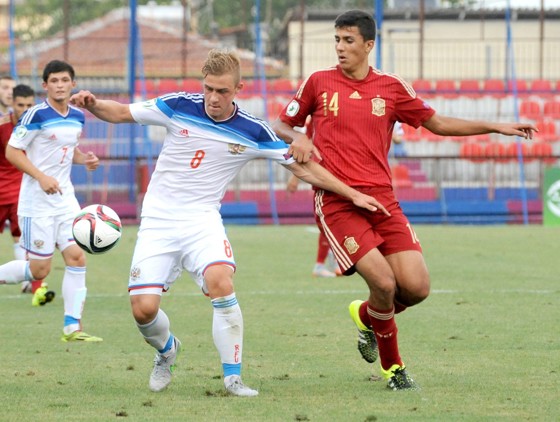
By that time, he had represented his country a couple of times at Under-16 level but flitted in and out of the Spanish youth sides.
But as he progressed with Villarreal’s B side, he was recalled for the Under-19s, winning eight caps at that level, and impressing alongside the likes of Dani Ceballos and Marco Asensio as the Spanish were crowned 2015 European U19 champions.
Gradually, he progressed to The Yellow Submarine’s first team, and won further recognition with Spain’s Under-21 side in 2017, adding a further six caps to his collection.
In fact, he was nicknamed ‘Bruno Xiquet’ (Little Bruno) at Villarreal because of comparisons to club legend and fellow defensive midfielder Bruno Soriano – his boyhood hero.

High praise indeed.
Albert Celades, former Spain Under-21 boss had given Rodrigo his Under-21 debut.
He said of the promising youngster: “For someone of his size he is very quick with both feet, making him able to bring the ball out when under pressure. He does difficult things with simplicity. Like Busquets, he has that intuition that allows him to be well-positioned, to know where a move is going so he’s there to take the ball.”
The Rodrigo/Busquets comparisons would continue throughout his fledgling career with Mundo Deportivo claiming: “Everyone points out to him as a kind of Busquets, a physical marvel of 1.90 that does not let a ball escape, distributes judiciously as well as contributing to set pieces.”
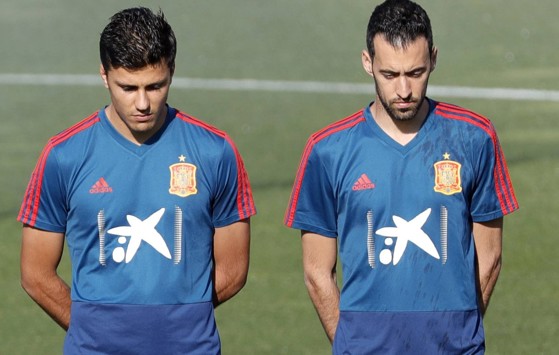
In March 2018, Rodrigo’s upward trajectory went on as he was handed his senior international debut for La Roja against Germany, replacing Thiago Alcantara with perhaps a gentle nod to his future role in the side
He had added power and a few more inches in height during that time, convincing Atleti to return for Rodrigo and agree a fee in the region of 25milion euros with Villarreal in 2018 and take the player back to their new home at the Estadio Metropolitano.
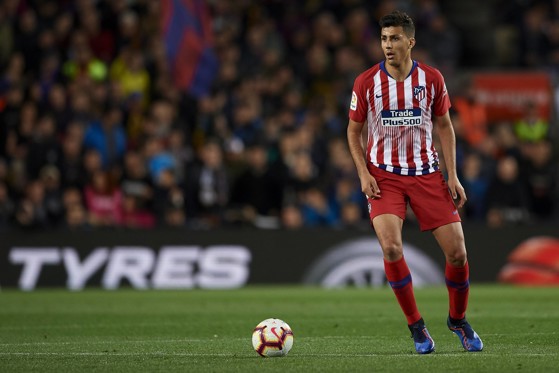
He played almost all the games for Diego Simeone’s side in 2018-19, making 47 appearances in total – and by that time had attracted a number of admirers both in Spain and abroad – Manchester City in particular, who had identified the holding midfielder as an heir to Fernandinho’s throne. If Barcelona, rumoured to have shown late interest, had though the same of a future successor to Busquets, they had left it too late.
Though he had penned a five-year deal with Atleti, City met his buy-out clause and after a terms were agreed, he headed to Manchester to continue his club career, taking the vacant No. 16 shirt once owned by another ex-Atleti star, Sergio Aguero.
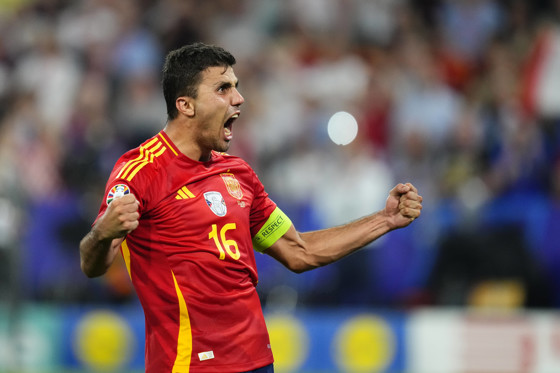
At the time, Txiki Begiristain, City’s Director of Football said: “Rodri has proven himself to be a hugely talented, young midfielder, who has all the attributes we are looking for.
“He works hard defensively, makes himself available to receive the ball and uses it well when in possession. He is a perfect fit for Pep Guardiola’s team, and we are confident he will be a success.”
How prophetic those words would become.
He made his City debut away to West Ham in 2020, gradually learning the Guardiola way as well as studying the imperious Fernandinho and his sizeable skillset as a holding midfielder.
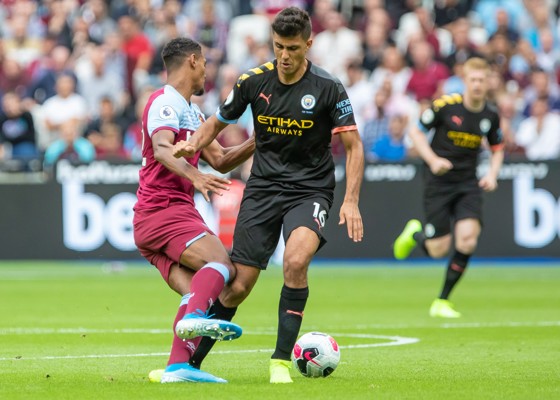
With 53 appearances during his first City campaign in 2020/21 Rodrigo seemed a shoo-in to be included in Spain’s Euro 2020 squad – which he was –and he has played his part in their journey to face Roberto Mancini’s Italy at Wembley in the semi-final.
In that game, he started at sub, replacing Koke on 70 minutes but ultimately couldn’t stop the Azzurri winning the game on penalties on their way to eventually beating England to be crowned European champions.
Busquets was still the first choice holding midfielder for Spain at the 2022 World Cup with Rodrigo utilised in central defence, but it was a team in transition, trying to find its identity again and when Morocco eliminated La Roja at the Round of 16 stage, Luis Enrique’s reign as national team boss was over.
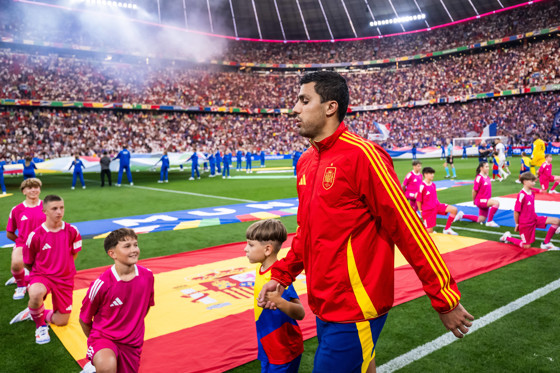
He was replaced by former Spain youth team boss Luis de la Fuente who had spent almost a decade coaching Spain’s youth teams at Under-19, U21 and U23 levels, earning a reputation for playing stylish, possession based football.

And one player he knew particularly well was Rodrigo who he had been aware of since he was a 16-year-old and worked with for the best part of his time coaching Spain’s youngsters.
The 2022/23 Nations League success against Croatia was the perfect lead into Euro 2024 and it is Rodrigo, now vice captain of Spain that has become irreplaceable in de la Fuente’s exciting, free-flowing side that seems to contain the perfect balance of youth and experience.
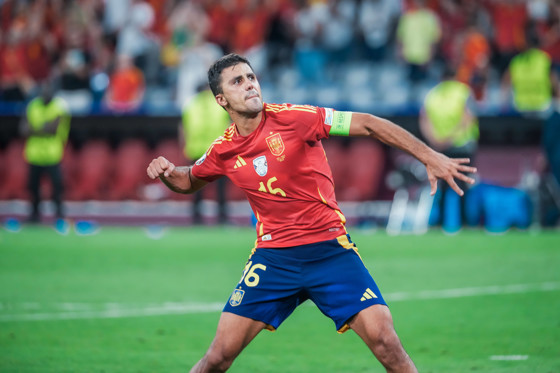
At the centre of it all and absolutely integral to this great Spanish side, is our No.16 - running the show with the usual understated excellence that City fans have become so accustomed to.
And at just 28, with 56 caps won so far, his international adventure is set to continue for many years to come...

